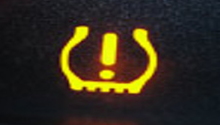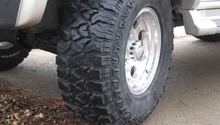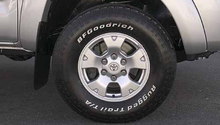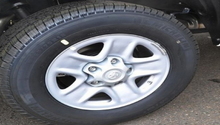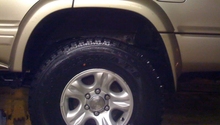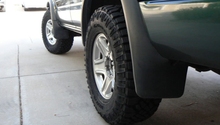Toyota 4Runner, Tacoma, and Tundra: Wheel and Tire Diagnostic Guide
Regularly maintaining your Toyota's wheels and tires is a simple habit that will save you a ton on gas, time, money, and most importantly, stress. In this article, we'll show you some crucial inspection points for your car's wheels and tires and what to do when you've encountered a problem.
This article applies to the Toyota 4Runner, Tacoma, and Tundra (1984-present).
Those four rubber tires attached to your Toyota are the only points of contact between you and the road, which means that if your daily commute feels rougher than usual or your car is suddenly trying to run you off the road, a problem with the wheels, tires, or even suspension might have occurred. it's not too difficult to pinpoint the source of damage or excessive tire wear in a car's wheels. Often times, the issue can be visually spotted or heard while you're driving. But whether or not you suspect a problem with the wheels, running through the following diagnostic steps will have your car properly maintained and might show you which part needs fixing.

Materials Needed
- Tire pressure gauge
- Air compressor
- Spray bottle
- Soap and water
- Chalk
- Measuring tape
- Angle finder
Step 1 – Check the tire pressure
The tires might need more air.
There's more than one reason why the pressure in your Toyota's tire or tires may have decreased. However, the most common is simply from forgetting to check and add more air from time to time. First, check the air pressure of each tire and make sure it is within the normal PSI levels as stated on the side wall of the tire. To do so:
- Press the tire pressure gauge against the tire valve. Hold it firmly against the valve and make sure no air is being released as you're doing so.
- Reset the gauge and get the reading of the tire pressure a few more times in case the first reading was incorrect.
- If the tire pressure is low, use an air compressor to fill the tire to its correct PSI.
- Remember to check the air pressure of each tire regularly. If the pressure decreases significantly and at a quicker rate than normal, a puncture in the tire may be letting air out.
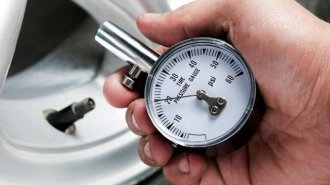
If the tires have the correct PSI but you are still experiencing steering problems or hear noises from the tires, move on to the following step.
Step 2 – Check the tire tread and sidewall
The tires might be wearing unevenly.
Several reasons may cause one or more of the tires to wear unevenly, such as under or over inflation, a puncture, misalignment or unbalanced tires. Addressing the issue sooner rather than later could be the difference between you having to replace the tires alone, or having to replace the tires in addition to the steering and suspension components that have become damaged from driving on misaligned or unbalanced tires. First, if you're installing new tires or the tires already have more than 5,000 miles on them, make sure they are correctly balanced. While a tire is constantly rotating, the entire length of the tire's tread should be making equal contact with the ground. Tires not designed for your car or tires with excessive wear may be wobbling laterally on the axle as you drive. You can often feel when the tires are unbalanced if the steering wheel shakes or the up-and-down movement of your car becomes too obvious.
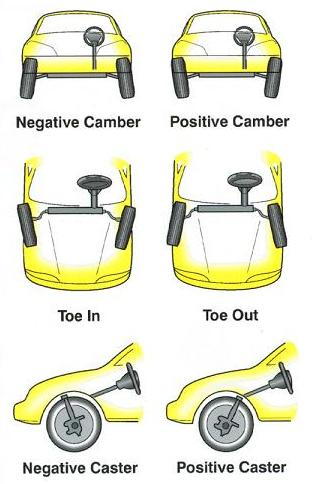
If there's a problem with the car's alignment, certain abnormal tread patters could show you exactly what the problem is. If the front of the tires are pointing inward, you have a toe-in misalignment, and if the front of the tires are pointing outward, you have a toe-out misalignment. When the bottom tread is sticking out past the fender and the top tread is far inside the wheel well, you have a negative camber; if the top tread is sticking out past the fender and the bottom tread is far inside, you have a positive camber. Misalignment can be fixed by adjusting the tie-rods and adjuster sleeves. However, it's always best to have a professional check and adjust your car's alignment as it could be the toe, camber, caster, or unbalanced tires causing your steering problems.
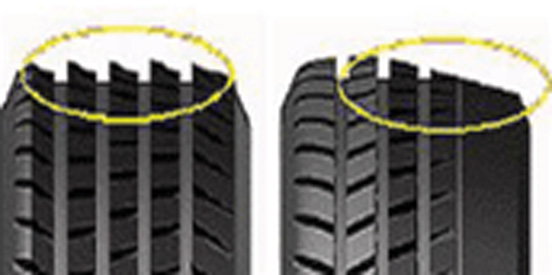
If you want to inspect the toe and camber alignment yourself, follow these instructions:
- Make sure your car is parked on level ground and the steering wheel is centered.
- Raise the front end of the car until both wheels are evenly off the ground.
- Steadily place a piece of chalk against the center of the tire tread and roll the tire until you have a solid line along the tire's circumference.
- Mark a solid line on the other tire as well.
- Measure the front and rear lines of the tire to compare the toe measurements.
- To measure the camber, lower your car to the ground and make sure the steering wheel is centered.
- Use an angle finder against the sidewall of the tire to measure a negative or positive camber.
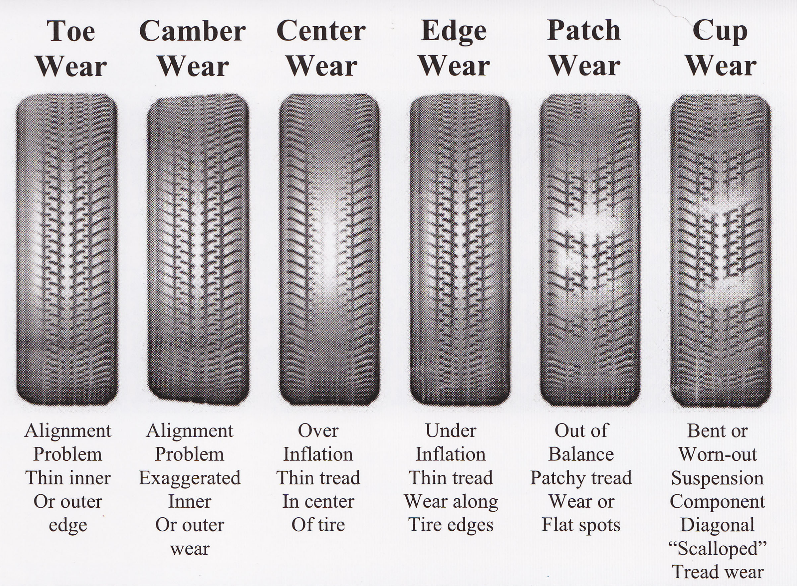
If the tires are properly balanced and aligned, move on to the following step.
Step 3 – Check the wheel
The rim could be bent or damaged.
If the problem isn't the tires themselves, you may have a damaged rim. Driving over the curb or a large pothole may have caused the edge of the rim to get damaged and have a small bend, which might also be causing air to leak out of the tire. If the rim is bent, you may be able to have it repaired at a tire shop. However, you will have to replace the tire if it got damaged as well.
- Visually inspect the outer edge of the rim.
- If you see no damages, remove the wheel and check the edges of the inner rim.
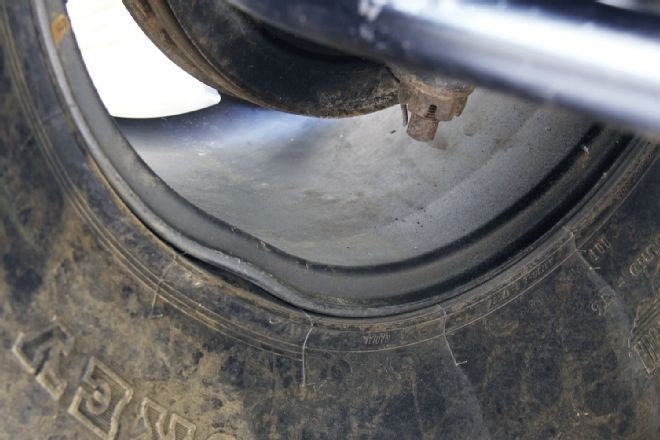
Related Discussions
- Excessive Wear Rear Tires - YotaTech.com
- Tire Tread Problem - YotaTech.com

